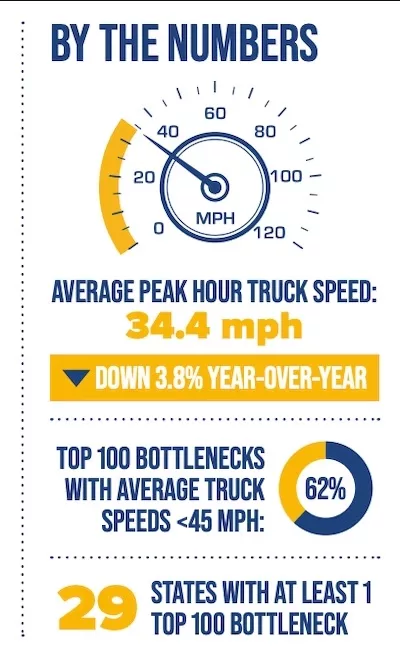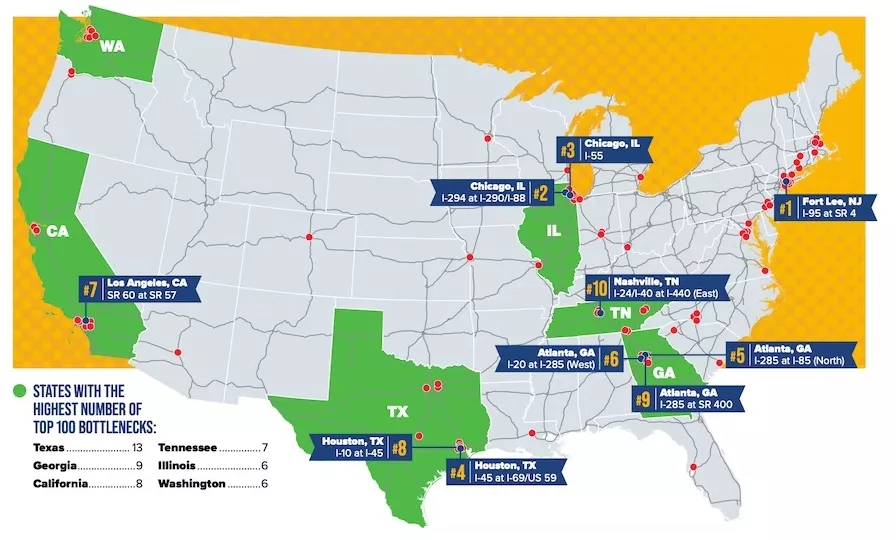Once more, crossing from New Jersey into New York City continues to pose significant challenges for professional drivers.
Located in Lee, New Jersey, the junction of Interstate 95 and State Route 4 stands out as the most congested bottleneck for truckers among the 100 identified by the American Transportation Research Institute in its 13th annual list highlighting problematic areas across the United States.
For the sixth consecutive year, the intersection that feeds into the George Washington Bridge reclaims its title as the primary freight bottleneck nationwide. The list also includes nine other congested spots in the top 10.
2. Chicago: I-294 at I-290/I-88
3. Chicago: I-55
4. Houston: I-45 at I-69/US 59
5. Atlanta: I-285 at I-85 (North)
6. Atlanta: I-20 at I-285 (West)
7. Los Angeles: SR 60 at SR 57
8. Houston: I-10 at I-45
9. Atlanta: I-285 at SR 400
10. Nashville: I-24/I-40 at I-440 (East)
Texas leads the nation with the highest number of trucking bottlenecks, totaling 13, followed by Georgia with nine, California with eight, Tennessee with seven, and both Illinois and Washington with six each.
The 2024 Top Truck Bottleneck List assesses truck-related congestion levels at over 325 points across the national highway system. ATRI’s analysis utilizes a vast database of freight truck GPS data and employs various customized software applications and analytical techniques, alongside extensive data from trucking operations, to generate a congestion impact ranking for each location.
While the ATRI list highlights the top 100 congested locations, the organization continuously monitors over 325 freight-critical points for potential bottlenecks.
“Traffic congestion on our national highway system inflicts an enormous cost on the supply chain and environment, adding $95 billion to the cost of freight transportation and generating 69 million metric tons of excess carbon emissions every year,” said ATA President and CEO Chris Spear. “The freight bottlenecks identified in this report provide an actionable blueprint for state and federal transportation officials on where to invest infrastructure funding most cost-effectively. Increasing freight efficiency should be a top priority for the U.S. DOT, and alleviating these bottlenecks would improve highway safety, protect the environment and support interstate commerce.”
For access to the full report, including detailed information on each of the 100 top congested locations, please visit ATRI’s website here.






